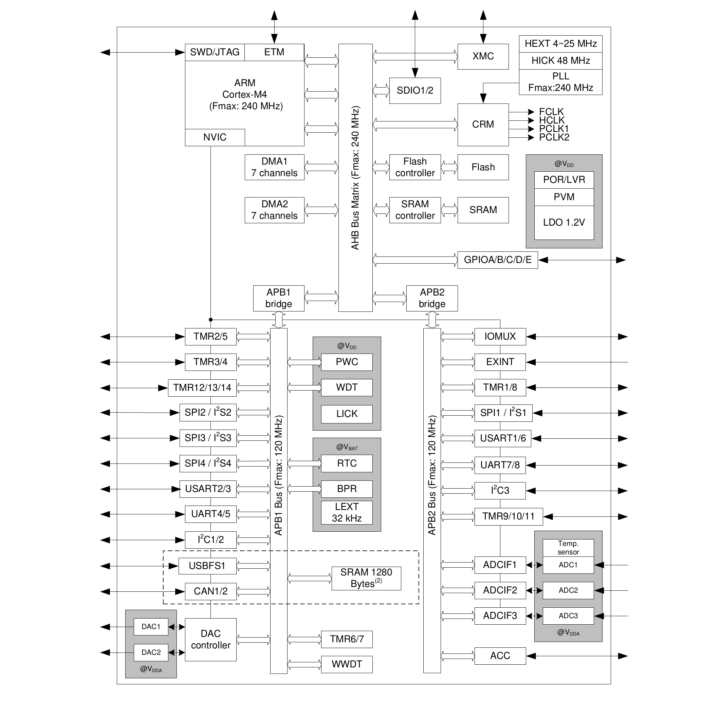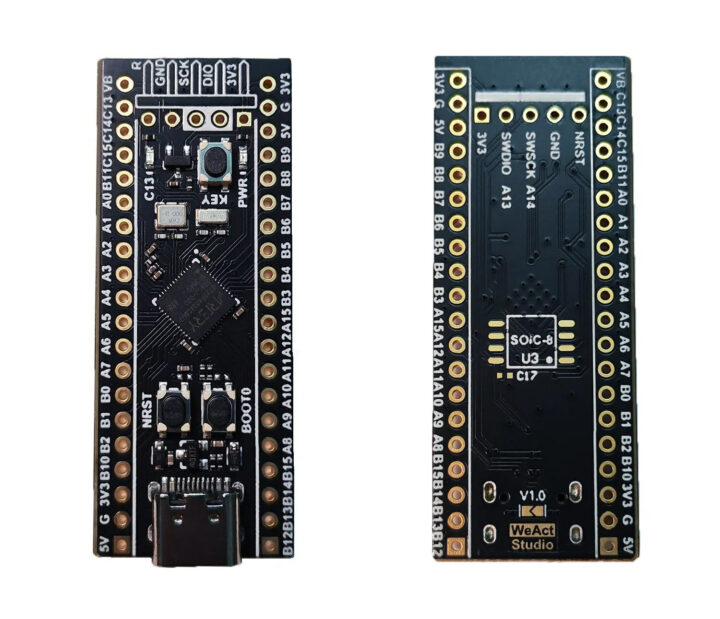The “Black Pill” board with an STM32F4 Cortex-M4F MCU is already cheap, but I’ve just come across a clone going for just 49 cents plus shipping (34 cents to Thailand) based on a 240 MHz AT32 (or AT32F4) Cortex-M4F microcontroller with Arduino support. [Edit: the price looks like a lottery and everybody seems to get a different price, and not related to VAT. See comments section]
Other features are pretty much the same with two 20-pin headers for GPIOs, an SWD header, a USB Type-C port for power and programming, and a few buttons.
WeAct “Black Pill” board specifications:
- Microcontroller – Artery Technology AT32F403ACGU7 Cortex-M4F MCU @ 240MHz with 96 + 128KB RAM, 256KB zero wait-state flash, 768KB non-zero wait-state flash; note: RAM and flash size are somehow configurable by the user, and the numbers listed here are the maximum capacities.
- Storage – Footprint for SPI flash
- USB – 1x USB Type-C port for power and programming
- Debugging – 5x pin SWD header or USB port
- Expansion – 2x 20-pin headers with power signals, up to 7x U(S)ART, 3x I2C, 4x SPI, 1x USB FS, 10-channel 12-bit ADC, 4x I2S, 12x TIM, 2x CAN, 2-channel DAC
- Misc
- Reset (NRST), Boot0, and user buttons
- 8MHz/25MHz high-speed crystal oscillator
- 32.768KHz low-speed crystal oscillator
- Power – 5V via USB, 3.3V-5V power input via headers; 3.3V LDO maximum output current 100mA
- Dimensions – About 52.4 cm x 20.8 mm

The AT32 microcontroller can be programmed with the C language using the Keil IDE, and you’ll find resources such as SDK with code samples, a datasheet, a reference manual, and tools on GitHub. Alternatively, WeAct has also developed the ArduinoCore-AT32F4 “library” to allow users to easily program AT32F4 boards with the Arduino IDE, and you’ll find the code and instructions in a separate repository.
The Artery website also has a long list of Windows and Linux tools, application notes, and more details about their AT32F403A Series microcontrollers on the relevant product page.


Jean-Luc started CNX Software in 2010 as a part-time endeavor, before quitting his job as a software engineering manager, and starting to write daily news, and reviews full time later in 2011.
Support CNX Software! Donate via cryptocurrencies, become a Patron on Patreon, or purchase goods on Amazon or Aliexpress





